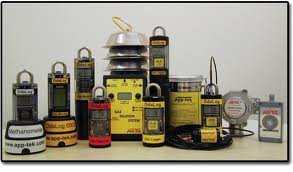WMAir specialises in:
- Odour determination studies
- Air monitoring
- Air sampling
- Air testing
- Air quality assessments
- Office air quality
- Industrial air quality
- Building air quality
- Air Conditioning air quality
- Industrial & commercial hygiene studies
The main sources of mold exposure are from the indoor air in buildings.
Employers, operators & building owners are required to provide a safe workplace atmosphere for their employees, contractors & visitors in which the airborne contaminants do not exceed the exposure limits.
Our reports comply with the Safe Work Australia “Workplace Exposure Standards for Airborne Contaminants.”
Exposure to “Toxic Black Mold”, for example, can have a wide range of effects, such as: chronic fatigue or headaches, fever, irritation to the eyes, mucous membranes of the mouth, nose and throat, sneezing, rashes, and chronic coughing. In severe cases of exposure or cases exacerbated by allergic reaction, symptoms can be extreme including nausea, vomiting, and bleeding in the lungs and nose.
We have found that offensive odours generate more complaints than any other contaminant. Offensive odours can be produced by:
- Wastewater treatment plants
- Rendering plants
- Livestock facilities
- Landfills
- Poultry & pig farms
- Food Factories
- Composting operations
- Mushroom farms
- Chemical works
Many respiratory illnesses are directly related to poor air quality. The average office worker spends over 90% of their time indoors & breathes in over 8,500 litres of air per day.
Airborne contaminants, such as: organic vapours, fumes, mold spores, aerosols & dust are common in the workplace.
Our laboratories are NATA (National Association of Testing Authorities) approved.
Laboratory analysis & field tests include:
- Carbon Monoxide testing
- Dust sampling
- Carbon Dioxide (CO2) testing
- Chlorine Gas testing
- Total microorganisms
- Spore forming bacteria
- Gram positive cocci
- Gram negative bacteria
- Yeast
- Phylloplane fungi
- Non-phylloplane fungi
- Combined fungi
- Mold testing
- Soil sampling
- Nitrogen Dioxide
- Temperature Levels
- Crystalline Silica testing
- Relative Humidity Levels
- Wind speed monitoring
- General & Specific VOC (Volatile Organic Compound) testing
- Ultrafine particle testing
- Gas leak testing
- Stachybotrys “Toxic Black Mold” testing
Normally one of our Air Quality Engineers will meet with you & visit your site to discuss your concerns & requirements. Then they will deploy the appropriate air sampling equipment to measure the relevant contaminants. Once analysis results are obtained, a detailed report will be prepared explaining all readings & recommendations.
When mold spores are present in high levels, they can present a health hazard to humans, causing:
- Allergic reactions
- Sinus congestion
- Asthma episodes
- Irritations of the eye, nose & throat
- Mycotoxin production
- Fungal infections
- And numerous other respiratory problems
If you would like a free no obligation quotation to carryout air quality monitoring at your site, please email us at lab@watermanagementaustralia.com.au



